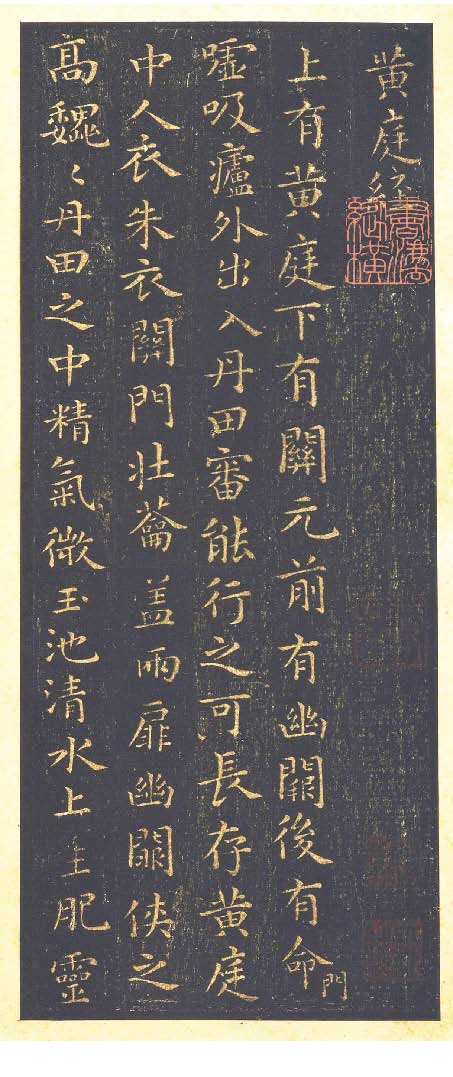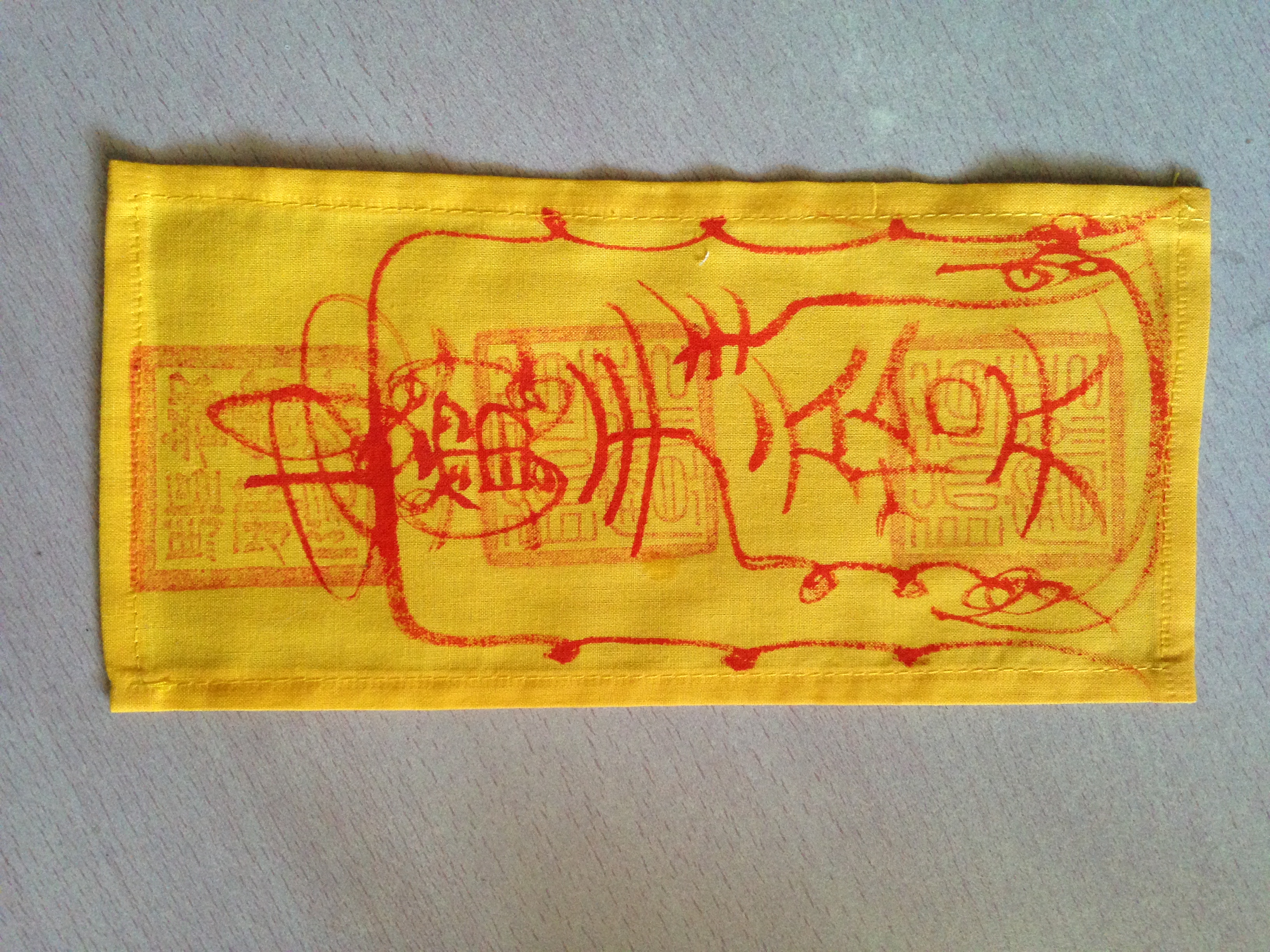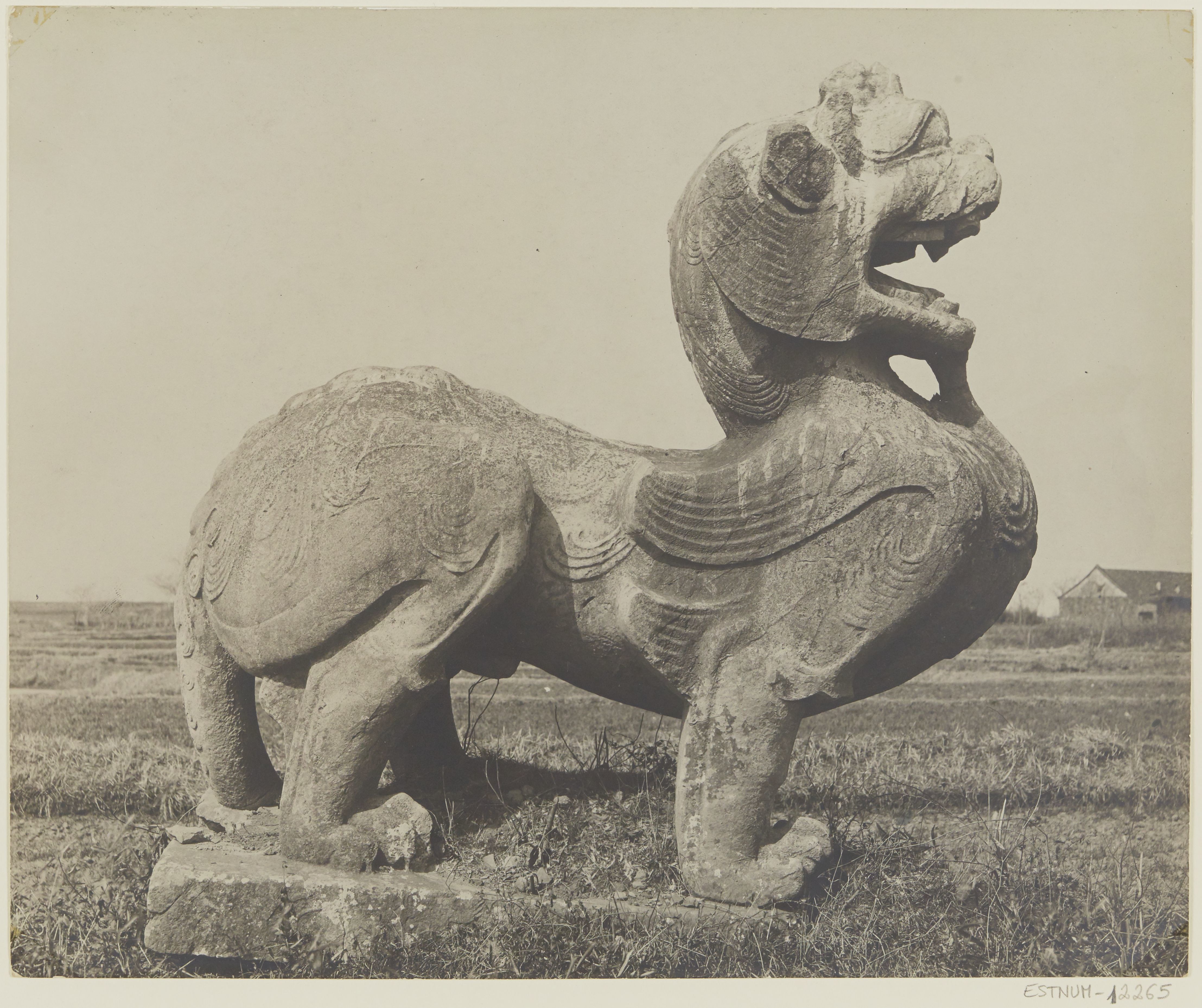|
Tao Hongjing
Tao Hongjing (456–536), courtesy name Tongming, was a Chinese alchemist, astronomer, calligrapher, military general, musician, physician, and pharmacologist during the Northern and Southern dynasties period. A polymathic individual of many talents, he was best known as a founder of the Shangqing School, Shangqing "Highest Clarity" School of Taoism and the compiler-editor of the basic Shangqing scriptures. Biography There are a variety of sources about Tao Hongjing's life, from his own writings to biographies in the official Twenty-Four Histories. The British sinologist Lionel Giles said Tao's "versatility was amazing: scholar, philosopher, calligraphist, musician, alchemist, pharmacologist, astronomer, he may be regarded as the Chinese counterpart of Leonardo da Vinci". Secular life Tao Hongjing was born in Moling (秣陵, present-day Jiangning District, Nanjing, Jiangsu), which was near the Northern and Southern dynasties period capital Jiankang (present-day Nanjing). His fat ... [...More Info...] [...Related Items...] OR: [Wikipedia] [Google] [Baidu] |
Tao (surname)
Tao is the pinyin romanization of Chinese, romanization of the Chinese surname (''Táo''). It listed 31st in the Song Dynasty, Song-era ''Hundred Family Surnames'' poem. Tao () is not to be confused with the Vietnamese surname , derived from the Chinese surname Cao (Chinese surname), Cao () or the Japanese surname , notably the surname of ski jumper and baseball player . Origin Various Tao origins: *Qi (surname) (祁) *Public Officer of Zhou Dynasty *Miao people *Tujia people, Blang people, Yao people, Yi people, Dai people of Minority Group *Mongols, Mongolian *Tuoheluo, Tuqin, Tuokuer family of Liaoning *Xibe people Romanization * Wade-Giles: T'ao, Tao (apostrophe is commonly omitted) * Cantonese: To, Tou (surname), Tou and Tow (surname), Tow * Cantonese, Minnan: Tô * Teochew Min, Teochew: Tau, Tow (surname), Tow * Gan Chinese, Gan: Thau (surname), Tháu Other languages * Vietnamese: Dao (surname), Đào () * Korean: Do () * Japanese: Distribution Tao was the list of ... [...More Info...] [...Related Items...] OR: [Wikipedia] [Google] [Baidu] |
Hagiography
A hagiography (; ) is a biography of a saint or an ecclesiastical leader, as well as, by extension, an adulatory and idealized biography of a preacher, priest, founder, saint, monk, nun or icon in any of the world's religions. Early Christian hagiographies might consist of a biography or ' (from Latin ''vita'', life, which begins the title of most medieval biographies), a description of the saint's deeds or miracles, an account of the saint's martyrdom (called a ), or be a combination of these. Christian hagiographies focus on the lives, and notably the miracles, ascribed to men and women canonized by the Roman Catholic church, the Eastern Orthodox Church, the Oriental Orthodox churches, and the Church of the East. Other religious traditions such as Buddhism, Hinduism, Taoism, Islam, Sikhism and Jainism also create and maintain hagiographical texts (such as the Sikh Janamsakhis) concerning saints, gurus and other individuals believed to be imbued with sacred power. However ... [...More Info...] [...Related Items...] OR: [Wikipedia] [Google] [Baidu] |
Grotto-heavens
Grotto-heavens () or Dongtian are a type of sacred Taoist site. Grotto-heavens are usually caves, grottoes, mountain hollows, or other underground spaces. In the Tang dynasty, immortals were thought to have lived in certain immortal cave-heaven lands that existed between heaven and earth, shrouded by colorful clouds; wonderful flowers, peach trees and fragrant grass were often said to have grown there. Because every community was supposed to have access to at least one grotto, there were many of them all over China. They were first organized systematically in Tang times by Sima Chengzhen () (647–735, see Zuowanglun) and Du Guangting () (850-933). The most sacred of these sites were divided into two types: The ten greater grotto-heavens and the thirty-six lesser grotto-heavens.Kohn (2000), p. 696. Locations of the ten greater grotto-heavens are as follows: * Mt. Wangwu grotto (Henan) * Mt. Weiyu grotto (Zhejiang) * Mt. Xicheng grotto (Shanxi) * Mt. Xixuan grotto (S ... [...More Info...] [...Related Items...] OR: [Wikipedia] [Google] [Baidu] |
Jintan District
Jintan District is a district under the administration of Changzhou in the Jiangsu province of the People's Republic of China. History Jintan, known as Jinshan () in ancient times, was a township of Yanling commandery since the reign of the Emperor Yuan of Jin. Then it was promoted by its inhabitants as Jinshan county to strengthen the local vigilance in the late Sui dynasty, without permission. As a densely populated area, the county was reestablished in about 688 under the Tang dynasty, but since there was a namesake in present-day Jinhua, Zhejiang, it was named after Jintan, a hill of Mao Mountain. Location In 1987, the County comprised 22 towns, with the county government located in Jincheng town. On November 10, 1993, Jintan was reclassified from a county and officially became a city. The county was part of Changzhou, Jiangsu province. In 2015, Jintan County has been changed to Jintan District. Jintan has a total area of . The total land area is , and water covers an ar ... [...More Info...] [...Related Items...] OR: [Wikipedia] [Google] [Baidu] |
Maoshan
The Shangqing School (Chinese:上清), also known as Supreme Clarity, Highest Clarity, or Supreme Purity, is a Daoist movement that began during the aristocracy of the Western Jin dynasty. Shangqing can be translated as either 'Supreme Clarity' or 'Highest Clarity.' The first leader of the school was a woman, Wei Huacun (251-334). According to her Shangqing hagiographers, her devotion to Daoist cultivation so impressed a number of immortals that she received revelations from them 31 volumes of Daoist scriptures which would become the foundation of Shangqing Daoism. Later, Tao Hongjing, a man, (Chinese: 陶弘景) (456-536) structured the theory and practice and compiled the canon. He greatly contributed to the development of the school that took place near the end of the 5th century. The mountain near Nanjing where Tao Hongjing had his retreat, Maoshan (茅山 – fr), today remains the principal seat of the school. Shangqing practice values meditation techniques of visualizatio ... [...More Info...] [...Related Items...] OR: [Wikipedia] [Google] [Baidu] |
Vision (spirituality)
A vision is something seen in a dream, trance, or religious ecstasy, especially a supernatural appearance that usually conveys a revelation. Visions generally have more clarity than dreams, but traditionally fewer psychological connotations. Visions are known to emerge from spiritual traditions and could provide a lens into human nature and reality. Prophecy is often associated with visions. Categories Evelyn Underhill distinguishes and categorizes three types of visions: # Intellectual Visions – The Catholic dictionary defines these as supernatural knowledge in which the mind receives an extraordinary grasp of some revealed truth without the aid of sensible impressions, and mystics describe them as intuitions that leave a deep impression. # Imaginary – In Teresa of Ávila, Teresa of Avila's ''The Interior Castle'', an imaginary vision is defined as one where nothing is seen or heard by the senses of seeing or hearing, but where the same impression is received that would ... [...More Info...] [...Related Items...] OR: [Wikipedia] [Google] [Baidu] |
Yang Xi (mystic)
Yang Xi (楊羲, 330-c. 386), courtesy name Xihe (deity), Xihe (羲和, a mythological solar deity), was an Jin dynasty (265–420), Eastern Jin dynasty scholar, Chinese calligraphy, calligrapher, and mysticism, mystic, who is best known for the "Shangqing revelations" that were purportedly dictated to him by Shen (Chinese religion), Taoist deities between 364 and 370. The Taoist polymath Tao Hongjing subsequently compiled and redacted Yang's revealed texts into the c. 499 ''Zhen'gao'' (真誥, Declarations of the Perfected) compendium, which formed the foundations of the Shangqing School of Taoism. Life The life of Yang Xi was closely intertwined with the aristocratic Xu (surname 許), Xu (許) family in Jurong, Jiangsu. He was employed as the in-house medium/shaman and spiritual advisor when the Perfected Ones directed Yang to transmit the revelation manuscripts to Xu Mi (許謐), an official in the court of Emperor Ai of Jin, and his son Xu Hui (許翽). The sinologist Isabell ... [...More Info...] [...Related Items...] OR: [Wikipedia] [Google] [Baidu] |
Fulu
() are Asemic writing, asemic Daoist, Taoist magic symbols and incantations, translatable into English as 'talismanic script', which are written or painted on talismans by Taoist practitioners. These practitioners are called , an informal group made up of priests from different schools of Taoism. Like most aspects of Taoist practice, use of these objects is not confined to Taoism: they have been incorporated into several forms of Chinese Buddhism, and have inspired the used in Buddhism in Japan, Japanese Buddhism and Shinto and the used in Korean shamanism. Etymology are instructions for deities and spirits, symbols for exorcism, and recipes for potions or charms used to treat ailments. A is a registry for the memberships of priests, which additionally lists the skills they are trained in. History Scholarly research into the history of Taoist symbolism has always been a particular challenge, because historically, Taoist priests have often used abstruse, obscure imag ... [...More Info...] [...Related Items...] OR: [Wikipedia] [Google] [Baidu] |
Lingbao School
The Lingbao School (), also known as the School of the Sacred Jewel or the School of Numinous Treasure, was an important Daoist school that emerged in China in between the Jin dynasty and the Liu Song dynasty in the early fifth century CE. It lasted for about two hundred years until it was absorbed into the Shangqing and Zhengyi currents during the Tang dynasty. The Lingbao School is a synthesis of religious ideas based on Shangqing texts, the rituals of the Celestial Masters, and Buddhist practices. The Lingbao School borrowed many concepts from Buddhism, including the concept of reincarnation, and also some cosmological elements. Although reincarnation was an important concept in the Lingbao School, the earlier Daoist belief in attaining immortality remained. The school's pantheon is similar to Shangqing and Celestial Master Daoism, with one of its most important gods being the deified form of Laozi. Other gods also existed, some of whom were in charge of preparing spirits ... [...More Info...] [...Related Items...] OR: [Wikipedia] [Google] [Baidu] |
Lu Xiujing
Lu Xiujing (; 406–477), known by the courtesy name Yuande (元德) and the posthumous name Jianji (簡寂), was a Taoist compiler and ritualist who lived under the Liu Song dynasty. His education was of Confucianist leaning. Nevertheless, he chose to study Taoism. Lu was devoted to his faith to the point of abandoning his family. During his pilgrimages to the various mountains where eminent Taoists had lived, Lu had the chance to collect the scriptures of various currents. His most important accomplishments are his edition of the Lingbao texts and his compilation of the first Taoist Canon. His structuring of the canon, known as the "Three Caverns", has been used from the Tang dynasty onwards. When he was working on the Lingbao compendium, Lu helped structure and expand the already complex set of rituals. Although Lu attributed a lot of importance to the rituals, he put them in second position in the Taoist Canon, that is in the second cavern. Lu was eloquent and hard-working, ... [...More Info...] [...Related Items...] OR: [Wikipedia] [Google] [Baidu] |
Emperor Wu Of Southern Qi
Emperor Wu of Southern Qi (南齊武帝) (440– 27 August 493), personal name Xiao Ze (蕭賾), courtesy name Xuanyuan (宣遠), childhood name Long'er (龍兒), was the second emperor of the Chinese Southern Qi dynasty. He is generally considered to be an able and diligent emperor, although he is also criticized for leading a lavish lifestyle. Background Xiao Ze was born in the Liu Song capital Jiankang in 440, when his father Xiao Daocheng was just 13 years old. He was the oldest son of his father, and his mother Liu Zhirong was Xiao Daocheng's wife. By 466, when Xiao Daocheng was a Liu Song general, Xiao Ze was a county magistrate at Gan County (贛縣, in modern Ganzhou, Jiangsi), when he was stuck in the civil war between Emperor Ming, whose claim his father Xiao Daocheng supported, and Emperor Ming's nephew Liu Zixun, who also claimed the throne. Because of Xiao Daocheng's support for Emperor Ming, Xiao Ze, who was deep in the territory controlled by Liu Zixun, was ... [...More Info...] [...Related Items...] OR: [Wikipedia] [Google] [Baidu] |
Filial Mourning
Filial mourning () refers to a bureaucratic norm, practiced since the Han dynasty, whereby officials of the imperial government of China were obliged to resign their posts and return to their home upon the death of a parent or grandparent. Description The meaning of the phrase literally means 'to encounter worries/loss', i.e. bereavement. Once used to refer to all forms of mourning for one's parents, it evolved in meaning to refer only to the practice of officials resigning their posts for mourning. The roots of the practice lie in the Confucianist focus on filial piety as a key virtue of government, and thus was instituted during the Western Han dynasty, when Confucianism first became the official ideology of the empire. During the mourning period, banqueting, marriage, official activities and participation in the imperial examinations are all proscribed. The length of the mourning period is nominally three years, though in practice it has been described as being between twenty- ... [...More Info...] [...Related Items...] OR: [Wikipedia] [Google] [Baidu] |






